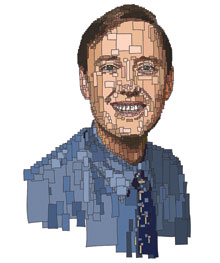The Pace of Innovation Never Falters
Innovation is critical to economic growth and progress, and yet it seems so random. But if we step back, a pattern emerges. The pace of innovation is accelerating and is exogenous to the economy. At Draper Fisher Jurvetson, we see that pattern in the diversity and quality of the entrepreneurial ideas coming into our offices. Scientists do not think more slowly during recessions. Startup proposals seem better during downturns.

For a model of the pace of innovation, consider Moore’s Law–the annual doubling of computer power or data storage capacity. As Ray Kurzweil has plotted, these increased exponentially from 1890 (with punch-card computing) to 2010, across countless technologies and human dramas. Most recently, we have seen Moore’s Law revolutionize the life sciences, from genomics to medical imaging, and work its magic in ever bigger and more diverse industries.
Technology’s nonlinear pace of progress has created a juggernaut of perpetual market disruption, spawning wave after wave of opportunities for new companies. Without disruption, entrepreneurs, and VCs like me, would not exist.
During previous recessions, false oracles declared innovation dead because they did not see any in mature industries like enterprise software. Predictable and stable industries resist new entrants. Entrepreneurs and VCs have to follow disruption across markets. Many of the TR50 will no doubt lead the way.
Multimedia
The Exponential Growth of Computing for 110 Years
Here are two foundational innovations to ponder that offer a variety of disruptive opportunities in coming years.
First, 2010 will be the year of the first scalable quantum computer. (I am an investor in D-Wave, a startup building a commercial quantum computer: see “Riding D-Wave,” May/June 2008.) If it follows “Rose’s Law” (named after Geordie Rose, a cofounder of D-Wave), annually doubling qubits for the next 10 years, it will handily outperform all computers on the planet combined.
It will also be the year of the first synthetic life form: 100 percent of its DNA will be made from scratch, from beakers of chemicals. This will introduce a new era of intelligent design in biology, in which technologists will write the code of life as if it were a computer program. Energy and chemical giants will experience the whiplash of Moore’s Law, as biotech companies create and test billions of novel microbial workhorses every day.
We haven’t seen anything yet.
Steve Jurvetson is managing director of Draper Fisher Jurvetson, a venture capital firm in Menlo Park, Ca.

Keep Reading
Most Popular
Large language models can do jaw-dropping things. But nobody knows exactly why.
And that's a problem. Figuring it out is one of the biggest scientific puzzles of our time and a crucial step towards controlling more powerful future models.
How scientists traced a mysterious covid case back to six toilets
When wastewater surveillance turns into a hunt for a single infected individual, the ethics get tricky.
The problem with plug-in hybrids? Their drivers.
Plug-in hybrids are often sold as a transition to EVs, but new data from Europe shows we’re still underestimating the emissions they produce.
Stay connected
Get the latest updates from
MIT Technology Review
Discover special offers, top stories, upcoming events, and more.